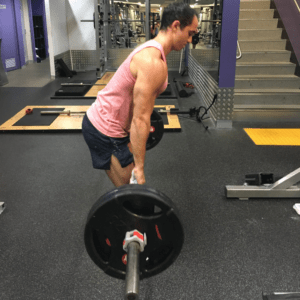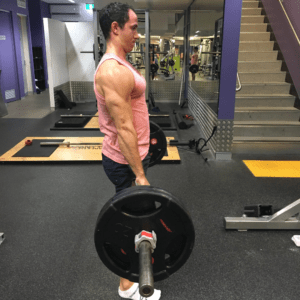Deadlifts are one of more common exercises we as Physio’s are asked about.
To read our NEWS on correct Deadlift Set Up click here.
When it comes to the actual lift read on below.
Before you begin the lift take a deep breath in through your nose while pushing out through your lower abdomen. This increases your intra-abdominal pressure (IAP), allowing your deeper and smaller stabilisers of the spine to switch on and help protect your back and generate more force.
Now that you’re in position its time to lift that bar off the ground. Think about pushing the floor away to activate your glutes and driving your hips forward rather than lifting the weight straight up. The bar should actually slide up your shins and thighs – you may notice people with bruises and scrapes, a good sign the bar isn’t too far way from your body. For this reason, you may want to wear a pair of high socks and/or pants.
As you stand and lock out your hips and knees (straightening your knees is not dangerous), make sure your glutes are completely squeezed at the top. Don’t hyperextend your low back, just stand up straight and keep your back tight and in a neutral position.
Lowering
To lower the bar, start by pushing your hips backwards. Keep your legs fairly straight as the bar slides down your thigh. When it gets just passed your knees, start to bend them and lower to the floor. If you try to bend your knees too early, they will get in the way of the bar and the bar path will not be in a vertical line ie stress through your low back will be increased.
Back rounding
A controversial topic amongst researchers and athletes is whether or not it is okay for a small amount of rounding through your lumbar spine (low back), or if your lumbar spine must be kept neutral throughout the entire movement. If this article was written 10 years ago then most Physiotherapists advice would certainly be that the back must be kept neutral during the movement. The basis of this argument is, lumbar spine flexion (forward bending) under load can cause damage to your intervertebral disc (the structure in between the bones of your spine that acts as a shock absorber), weakening the structure and potentially leading to a disc bulge/prolapse. If we observe the top deadlifters in the world (who can lift over 450kg, the world record currently stands at 500kg), they all deadlift with a flexed lumbar spine but yet none are being wheeled around in a chair. As your strength increases, so does the strength and therefore ability of certain structures (muscles, tendons, ligaments and the disc’s themselves) to withstand the increased load that they are subjected to. In saying this, my advice for beginners is to lift with a neutral spine when deadlifting as there is less risk involved.
If you have any questions on weight training for your body, or after an injury, contact the Physio’s at Bend + Mend in Sydney’s CBD.







